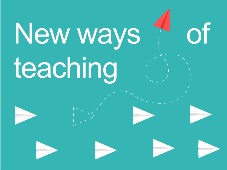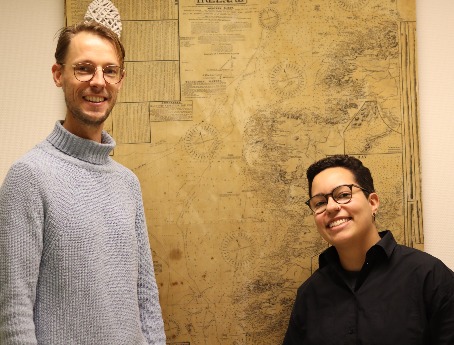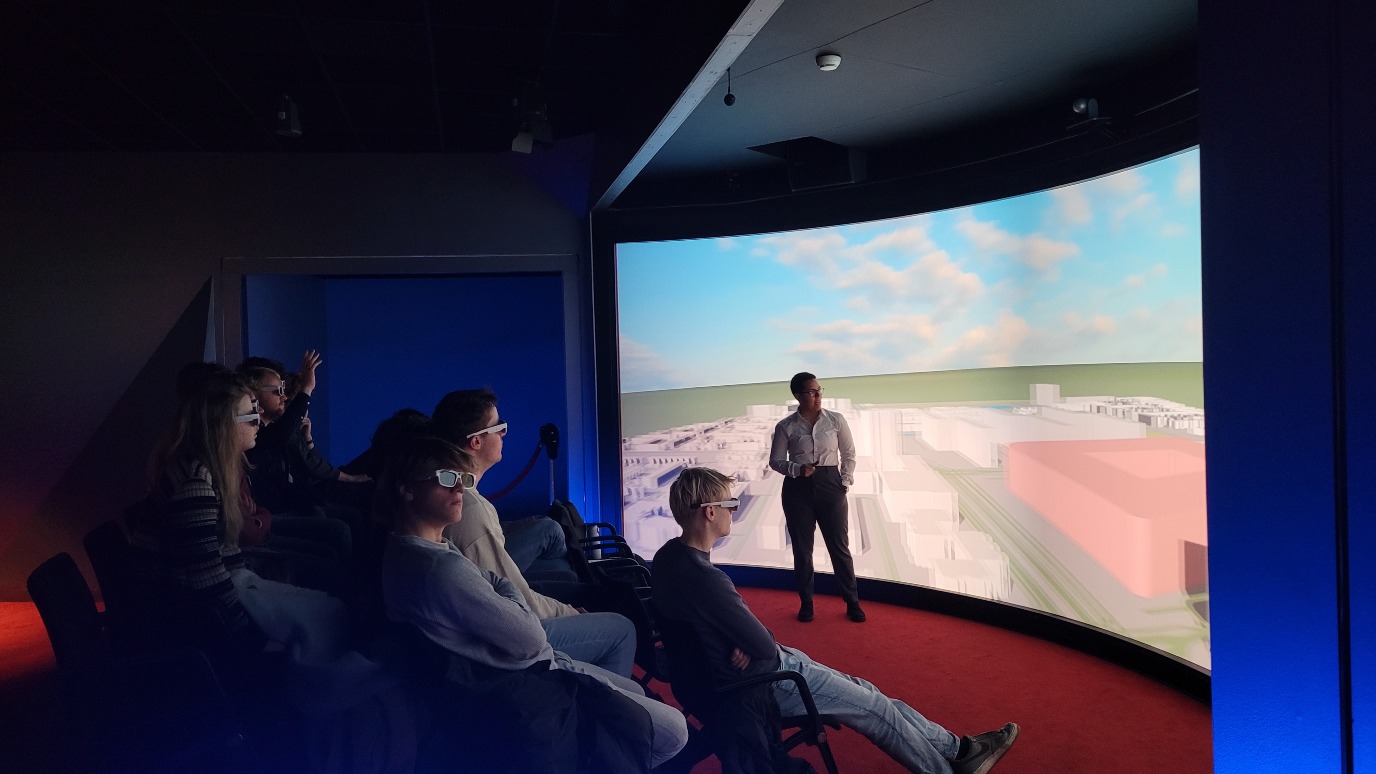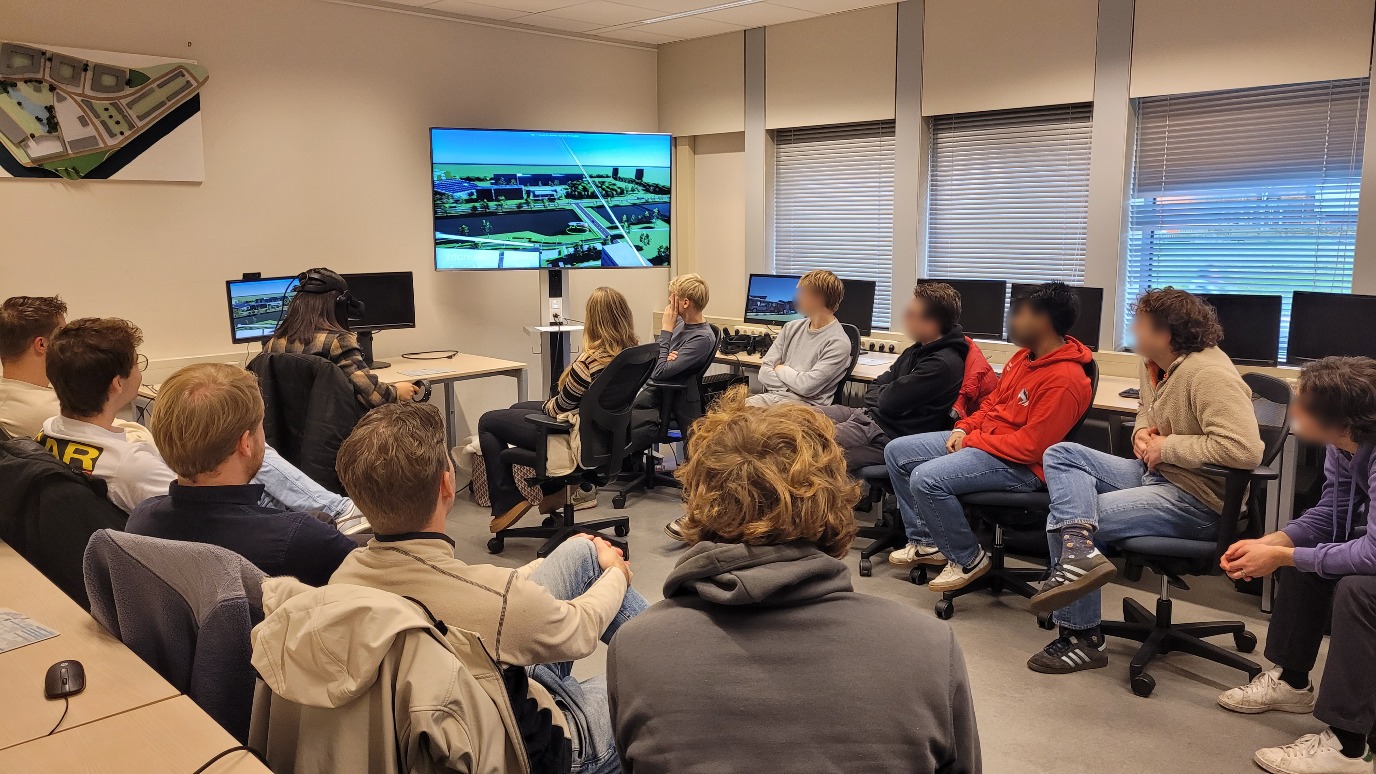Bringing buildings to life: how VR technology can enhance student learning and future employability

In New Ways of Teaching, lecturers talk about their innovative, creative, and effective teaching initiatives. From unusual teaching methods to new technologies—anything is possible. How do these ideas arise and what impact do they have on students? This month: spatial planning through VR technology.
To prevent students from feeling lost after graduation, Niels Grootjans, coordinator of Design Education and Research, and Júlia Dos Anjos Marques, PhD student at the Faculty of Spatial Sciences, developed a way to combine essential practical skills with academia. With the help of virtual reality (VR), students acquire a versatile toolkit that prepares them for their future careers, either within or outside of academia.

Setting the stage
‘Initially, we invested in VR equipment to support research, but its potential to transform teaching quickly became apparent. By integrating VR into the curriculum, we aimed to prepare students to become practitioners with a versatile toolkit — one that aligns with the technologies used by municipalities and industry partners today. This collaboration between academia and practice ensures our graduates are able to transition seamlessly into professional roles. The VR Experience Days were originally designed to complement existing coursework in a multifaceted manner since VR allows students to dynamically experience spatial complexity while fostering a deeper understanding of how design choices resonate on a human scale. Ultimately, the event fosters not only technical agility but also the ability to articulate ideas across mediums, a critical skill when it comes to collaborating with clients, communities, and interdisciplinary teams.’
Two days of discovery
‘The Experience Days were organized for 120 second-year students in our Bachelor’s degree programme in Spatial Planning and Design, hosted at two cutting-edge facilities: the Reality Theatre at the Smitsborg Building and the Atlas VR Lab at our Faculty. Over two days, the students rotated between these two spaces, each offering distinct yet complementary learning experiences. At the Atlas VR Lab, the students learned to navigate software tools essential for spatial design. A highlight was their immersion in a virtual replica of the UG’s Zernike Campus. Through interaction with a familiar site, the students gained a practical insight into how VR can refine design processes while connecting classroom concepts to real-world applications. Meanwhile, the Reality Theatre sessions focused on collaborative debate. Using VR-rendered scenarios, students explored complex, real-world case studies such as the Wadden Sea World Heritage Centre in Lauwersoog and Groningen’s Paddepoel neighbourhood. These scenarios posed contrasting challenges: Lauwersoog emphasized balancing landscape preservation with the introduction of a proposed new regional landmark, while Paddepoel grappled with extreme proposals for a local hub with a well-established identity that now needs to account for the high housing demand.’

Adapting to change
‘VR technology redefines how we approach spatial challenges in an era marked by rapid urbanization, climate adaptation, and evolving societal needs. For instance, users can immerse themselves in a proposed urban square to assess pedestrian flow or sunlight patterns, all while adjusting designs in real time. This immediacy transforms abstract data into visceral understanding, empowering planners to make informed, sensible decisions. As cities grapple with competing priorities—affordable housing, decarbonization, cultural preservation—VR serves as an experimentation hub that opens up new avenues for addressing complex spatial challenges.
In our Reality Theatre, students explore pressing issues such as urban density or heritage conservation through immersive scenarios, enabling them to visualize trade-offs and synergies. Similarly, the Atlas VR Lab allows users to manipulate 3D models while they are inside the virtual space, which fosters creativity and precision. Beyond technological innovation, VR also has the capacity to further democratize participation by providing experiences and spaces that can encourage and stimulate debate. By training students to leverage VR for both analysis and public engagement, we prepare them to lead projects that balance technical rigor with social equity — a hallmark of modern spatial planning.’

Reaping the benefits
‘For students, the event cultivates three core competencies: technical agility, critical synthesis, and collaborative problem-solving. Beyond skills, the Experience Days highlight the societal purpose of spatial planning’s. As one student reflected: ‘Urbanism isn’t just about buildings; it’s about creating spaces that mean something to people.’ This ethos aligns with our mission: to train planners who see themselves as stewards of communities, prioritizing equity, sustainability, and collective well-being.
For us lecturers, the event is both a teaching tool and a learning opportunity. Observing students who are navigating VR-driven debates reveals how effectively they internalize concepts we integrate into our courses. Additionally, student enthusiasm helps us to refine our methods because when students engage this deeply, it reminds us to stay sharp and keep bridging innovation with sensible decision-making.
Finally, the event’s success underscores VR’s broader potential. By fostering shared visual and experiential references, it democratizes planning debates, inviting diverse stakeholders—students, researchers, municipal partners, and citizens—to take part in a collaborative dialogue. This not only enriches teaching but it also advances our Faculty’s vision of spatial planning as a force for equitable and thoughtful spatial transformation, core principles that drive the upcoming Master’s degree programme in Designing Spatial Transformations’.
Beyond expectations
‘The response we received from students was overwhelmingly positive. They appreciated VR’s ability to make abstract concepts tangible. One of the students mentioned that they could not wait to experience their own designs through VR, while another explained that the Atlas VR Lab deepened their engagement and made them think more critically. After the sessions ended, we saw students staying longer, still debating the scenarios we had proposed. They were engaged, critically analysing the possibilities and implications of each design. This was the best possible outcome.
For us as lecturers, the most rewarding outcome was to see students voluntarily adopt VR as a design tool. Traditionally, physical models dominate the coursework but after the Experience Days, several groups requested to use VR for their projects — a testament to its perceived value.’
The event was orchestrated by the Faculty’s Visualization Team, led by the coordinator of Design Education and Research Niels Grootjans and lecturing PhD students Júlia dos Anjos Marques and Yun Sun, in collaboration with the CIT Visualization Team under the leadership of Dr Gert-Jan Verheij. This would not be possible without Dr Gerd Weitkamp and Dr Terry van Dijk.
More information
-
Read other editions of New Ways of Teaching
More news
-
15 September 2025
Successful visit to the UG by Rector of Institut Teknologi Bandung
